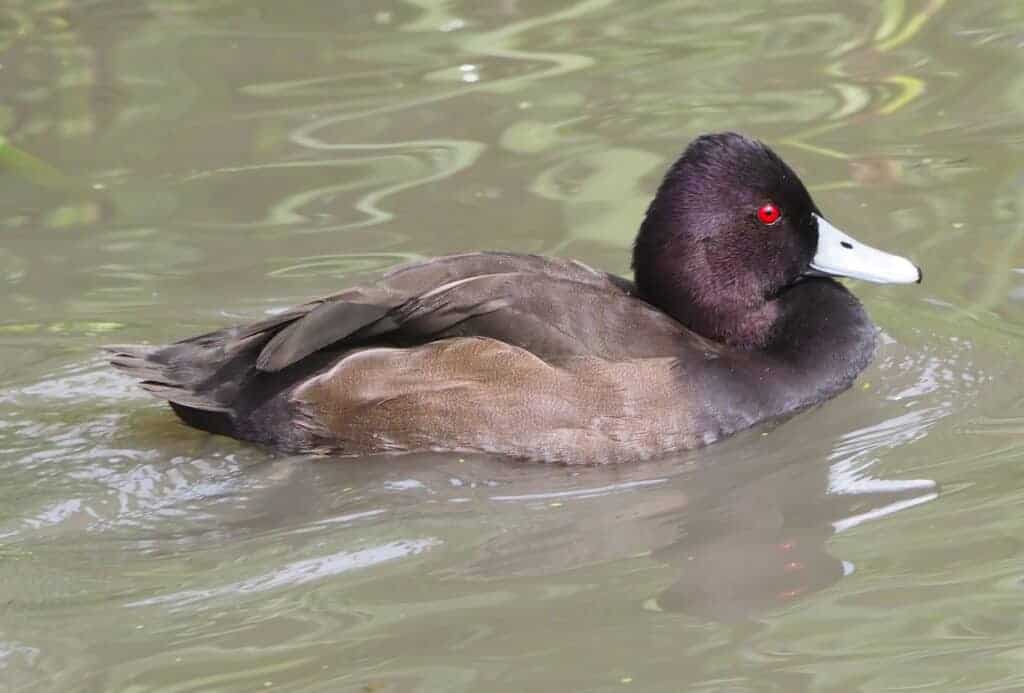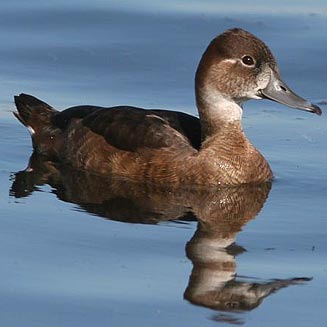Southern Pochard


Scientific name
Netta erythrophthalma
Subspecies
- South American (Southern) Pochard – N. e. erythrophthalma
- African (Southern) Pochard – N. e. brunnea
Measurements
| Feature | Range / Note |
|---|---|
| Length | ~45–50 cm |
| Weight | ~600–900 g |
| Wingspan | ~75–85 cm |
Status
South American population ~25,000 (2016 estimate); populations declining. IUCN: Least Concern globally but declining regionally.
Identification
Medium-sized diving duck. Males have a reddish eye and dark head, with pale brown body; females are duller with brown plumage. Both sexes have a compact body and rounded head.
Voice
Not widely documented; generally soft quacks and low calls, especially in flight or during group gatherings.
Diet
Omnivorous with a strong preference for aquatic plants. Adults feed on larvae, pupae, molluscs, and plant material by diving.
Behavior
Sociable and gregarious; can form large flocks up to 5,000 individuals. Usually seen on lakes, ponds, and rivers with submerged vegetation.
Distribution
- South American Southern Pochard: Colombia, Venezuela, Brazil, Ecuador, Peru, Bolivia, Argentina, Chile.
- African Southern Pochard: South Africa to Ethiopian highlands; concentrated in central plateaus and southwestern winter rainfall areas.
Habitat
Shallow freshwater bodies with submerged vegetation. Can be found from lowlands up to 3,700 m in South America. African populations occupy lakes, dams, and wetlands with or without emergent vegetation.
Breeding
Solitary nesters. Nests are made from leaves and stems on riverbanks among vegetation.
- Clutch size: 6–15 eggs
- Incubation: 20–28 days by female only
Young are led immediately to water after hatching.
Seasonality
Sedentary in many areas, though some populations may have migrated historically. Construction of farm dams has encouraged local residency.
Conservation
Populations are declining in South America; habitat protection and monitoring are important. Threats include wetland drainage, pollution, and hunting.
